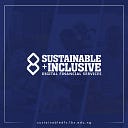Redefining Financial Inclusion
We may be going about financial inclusion all wrong…

At the core of the global drive for financial inclusion is the understanding that all lives have equal value — everyone should get the opportunity to live wholesome lives in peace and good health, with the ability to pursue their dreams and aspirations. In order to achieve this, people need to have the tools required to do just that, affordably and conveniently hence the importance of financial access.
Aside being a global good, inclusive growth is also an essential prerequisite for financial, economic, political or social stability of the society, regardless of which part of the world we are looking at, hence the formulation of the United Nation’s SDGs.
However, an emerging body of work is highlighting the limitations in measuring financial inclusion.
So far, for every major development organisation monitoring the rate of financial inclusion in nations (for example World Bank, EFinA and Intermedia), the metric of measurement is the number of bank/deposit accounts in existence (either with a commercial bank or a mobile money provider).
This is understandable because, the bank account opens up consumers to a world of other financial services beyond just remittances and payments — like insurance, credit etc. However, this presents a problem.
The problem with measuring bank accounts is that while it is able to measure the increase or decrease in uptake of financial services, it tells us nothing about usage. And it is in usage of the tools and services financial institutions provide that consumers can begin to reap the dividends of financial inclusion.
Take Nigeria’s situation for example.
As at the moment of writing, there are about 39 million unique bank customers who own a cumulative of about 118 million bank accounts. Now, what if about 50 percent of those accounts are inactive? Then the number 39 million becomes a bit superficial in the grand scheme of things. In reality, we would have less than 20 million people actively using their accounts.
Thus, when reporting financial inclusion, it is important that we also account for the ratio of access to usage.
A further complication is that many, if not most, mobile money customers are already banked individuals. It is not uncommon to see a banked individual with at least two bank accounts and a mobile money account.
It therefore becomes obvious that we need a new measurement or at least framework for measuring financial inclusion which takes into account these overlaps. In our collective quest for financial inclusion, if we fail to do these two things, we may end up patting ourselves on the back for a job poorly done and uncompleted.
When it comes to financial inclusion, access is not enough. It’s just one half of the puzzle! The other half is usage.
Financial inclusion initiatives in different parts of the world suffer from this phenomenon — at the onset of a financial inclusion initiative, there’s an initial spike in account openings followed by a lag in account use and activity. This leaves us with a high number of inactive accounts. The 2017 Global Findex reports that about one in five accounts around the world sits idle.
Still following that train of thought, a high number of inactive bank accounts could also signify other underlying problems within the ecosystem, for one, the lack of real value proposition to the consumer.
Is it possible that consumers just don’t see the benefits of using these services yet?
We know that a considerable percentage of the unbanked population are suffering in cycles of extreme poverty. They live hand to mouth which means, money is used immediately it gets to them, and hence no perceived need for long term savings.
So far, in the financial inclusion discourse, the focus has been more or less mathematical in nature — how many bank accounts are opened? However, the philosophy of financial inclusion demands a commitment from us, not only to bring financial access to all people (especially those who have been grossly underserved or excluded), but also to make sure these tools and services are affordable and convenient to use. Because, if financial services are affordable, then usage will increase and we can begin to reap the dividends of true inclusion.
As one expert put it, measuring bank accounts highlights “nominal inclusion” i.e. it is a vain metric. A high number of bank accounts doesn’t advance the economy nor does it give us the desired outcomes we want. Rather, people using financial services which are affordable and sustainable is what will take us to the desired utopia.
This just reinforces our original conviction that financial inclusion is a multi-dimensional task that requires all hands on deck — all stakeholders need to pull their own weight and then some, new and innovative models need to be explored and above all, collaboration between the public and private sector — in order to achieve true financial inclusion.
In what other ways can the dividends of financial inclusion be maximised?
